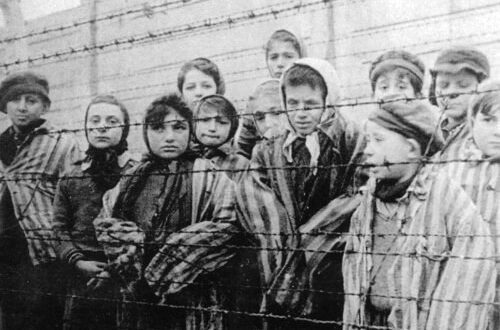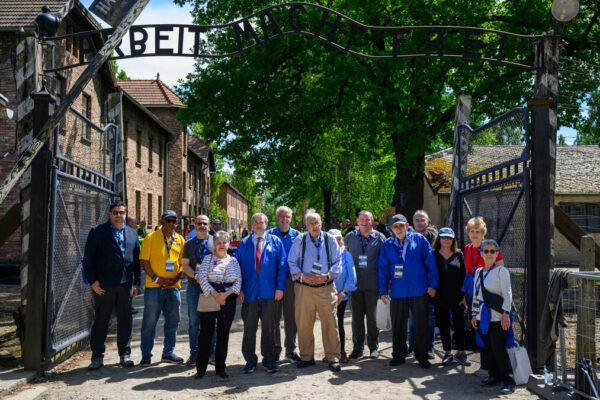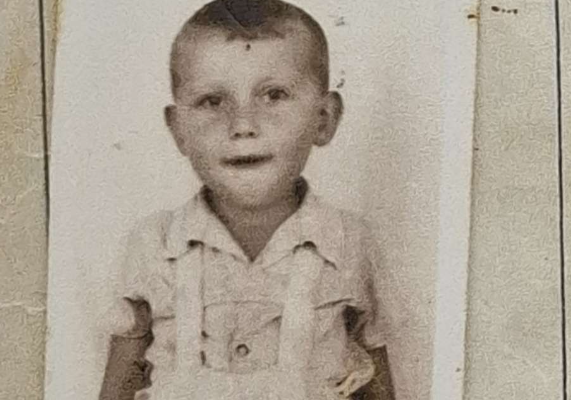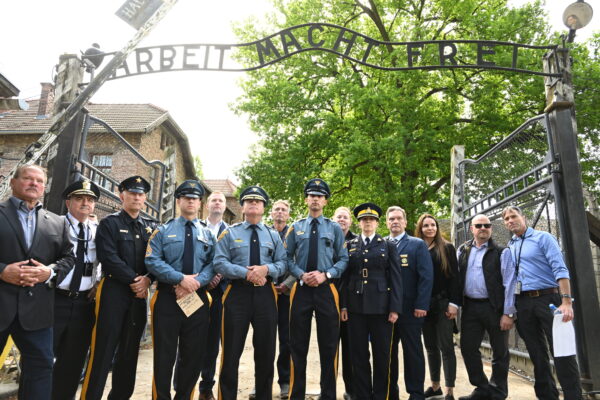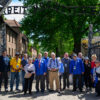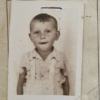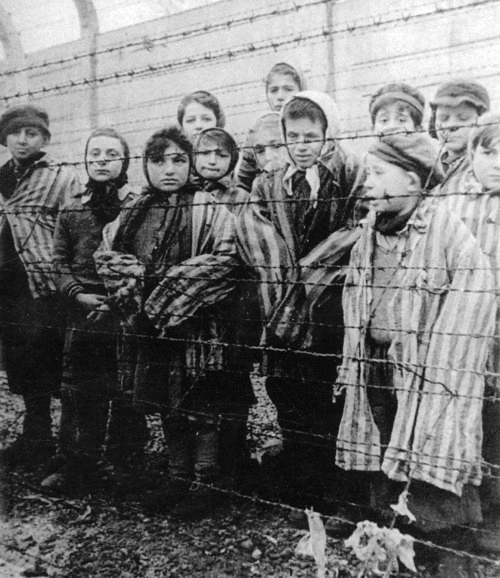
Child survivors of the Holocaust after the liberation of Auschwitz concentration camp by the Red Armyi January, 1945.
June 14, 2024 – Marking A Grim Anniversary for the Jewish People & the World
On Friday, June 14, 1940, 84 years ago, at 3:10 in the afternoon, the first transport of Polish men arrived in the newly created Auschwitz concentration camp.
The Germans established the camp in Oświęcim, a town in southern Poland – annexed directly into the Third Reich after the outbreak of the World War II -, whose Jewish community was founded in the middle of the 16th century. On the eve of World War II, there were about 8,000 Jews in the city, over half the town’s population. Oświęcim’s name in Yiddish was Oshpitzin which comes from the Aramaic word for guest- a stark contrast to the cynical “Arbeit Macht Frei” sign that greeted untold numbers of deportees upon their arrival to the Auschwitz prison camp during WWII.
The first deportees to Auschwitz were made up of 728 Poles, high school & university students, members of the intelligentsia, teachers, lawyers, athletes, musicians, physicians, members of Polish underground organizations, those young Poles trying to join the Polish army in France and others. The deportees, which also included at least 11 Jewish detainees, had been imprisoned for a number of months in the central German prison in Tarnow, before the decision was made to deport them to the newly purposed Auschwitz prison camp.
When they arrived at the camp, they were received by 30 German criminals – recently arrived from Sachsenhausen, who acted as their kapos and their overseers, along with SS camp garrison.
The new Polish prisoners, numbered 31 to 758 were treated with cruelty and brutality with daily beatings and humiliation – but this was only beginning of this camp’s infamous history.
Eventually, Auschwitz underwent a significant expansion and was transformed to what was to become the single largest killing field in the history of humanity.
Experimental use of the gas chambers in Auschwitz began on Soviet POWs and sick Poles in September 1941.The industrialized form of mass murder began in early 1942 with the construction of four large gas chambers and crematoria in the second and much larger part of Auschwitz camp complex – Birkenau. At the peak of the killing operation the camp operated gas chambers that had a capacity of killing about 8 thousand people per day.
Of the 1.3 million victims deported to Auschwitz-Birkenau during WWII, 1.1 million were Jews, 140,000 were (non-Jewish) Poles, 23,000 were Roma (Gypsies) and 15,000 were Russian Pows.
From among 1.3 million Auschwitz deportees, 1.1 million were murdered. Of those, 1 million were Jews (900,000 were murdered in the gas chambers immediately on arrival) , 70,000 non-Jewish Poles, 21,000 Roma, 14,000 thousand Soviet prisoners of war and more than 10,000 prisoners of other nationalities.
Victims, mostly Jews, were deported from all across German-occupied or controlled Europe, including Hungary, Poland, France, The Netherlands, Greece, The Protectorate of Bohemia and Moravia, Slovakia, Belgium, Yugoslavia, Italy and Norway. There was also a number of people deported to Auschwitz from the Third Reich.
As we mark this grim anniversary, we note with great alarm the waves of hateful antisemitism around the world that have risen to levels unseen since the end of WWII.
Indeed, many of the same antisemitic tropes that led to the building and operation of a horrific site like Auschwitz-Birkenau are still being voiced today.
This sobering fact only strengthens our resolve to keep marching year after year in Auschwitz-Birkenau and reminding the world that the lessons of the Holocaust should never be forgotten – especially now.
